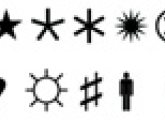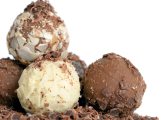A popular phrase is that chemistry is “just like cooking”. But can you learn about chemistry and cooking at the same time? Welcome Molecular Gastronomy; a sub-discipline of food science that seeks to investigate the physical and chemical transformations of ingredients that occur in cooking. The practice has a strong scientific heritage having been introduced by Hungarian physicist Nicholas Kurti and French physical chemist Hervé This.
In this lesson students explore the science behind traditional cooking methods and make edible treats using their chemistry skills. They also investigate methods of analysing foods employed by agencies such as the food standards agency and learn more about the colours, additives and preservatives that are designed to make our food attractive and give it a long shelf-life. Why not link up with your food technology department to deliver this lesson in your school kitchens so that students can sample the food that they create? Edible ingredients for molecular gastronomy can be purchased from MSK Ingredients [AR1]. It should be noted that any food prepared in a science laboratory or using laboratory grade chemicals should not be eaten for safety reasons.
WHY TEACH THIS?
Molecular Gastronomy covers a number of aspects of chemistry found in the KS4 syllabus including chromatography and food additives, changes of state, miscible and immiscible liquids, emulsifiers, pH and indicators. The aim of the lesson is to put the chemistry into a context that most students can easily relate to: food! Chemistry lessons in the kitchens at school can create an interesting diversion promoting engagement and making some of the higher-level aspects of KS4 chemistry more accessible.
STARTER ACTIVITY
Colourful chromatography
Food colourings are used extensively in processed foods such as sweets to increase their attractiveness especially towards children. However some food colourings are banned and others are thought to induce hyperactivity in some young people. Set the scene for students to investigate food colours in sweets and cakes using the information on this page from the Food Standards Agency [AR2]. Then use a classic chromatography practical described by the Nuffield Foundation [AR3]. Extend students’ knowledge by asking them how you could use chromatography to identify the food colourings used in a batch of sweets and therefore how the Food Standards Agency could determine whether prohibited food colourings have been used.
MAIN ACTIVITIES
1 Strawberry caviar
Agar is derived from the polysaccharide agarose, which forms the supporting structure in the cell walls of certain species of algae, and which is released on boiling. Since about 1650 in Japan, into modern times, agar has been used as an ingredient in desserts and more recently as a solid substrate to contain culture bacteria for microbiological work. To make strawberry caviar [AR4] students need 100ml of strawberry juice and should boil it with 1 g of agar powder until the agar is fully dissolved. While doing this they need to chill some vegetable oil in the fridge in a long pyrex measuring cylinder or glass. Once the juice and agar mixture has cooled for about five minutes fill a plastic syringe with the mixture and drop it drop by drop into the oil. As it cools it sets and collects at the bottom of the cylinder as a perfect sphere of strawberry juice. Once complete strain the strawberry caviar pearls using a sieve and store in apple juice until ready to eat! To make “spaghetti” squirt the same mixture from the syringe into clean silicon tubing and cool before pushing out using air from the syringe as described in this recipe from Molecular Recipes [AR5]. Use the process to explain the difference between miscible and immiscible liquids such as oil and water.
2 Nutella Powder
Another technique of molecular gastronomy chefs is to convert liquids with high fat content into solids using Tapioca Maltodextrin. Maltodextrin is a useful food additive as it is slightly sweet but with a neutral flavour and dissolves on the tongue. Due to the interaction of this polysaccharide with fats it can turn these substances into solid powders that melt in the mouth. To make nutella powder [AR6] students need to whisk or use a food processor to mix approximately 80g of tapioca maltodextrin with 120g of nutella. If you have made this in the school kitchens then sliced banana finishes of the treat very nicely. This technique also works with oils such as olive oil, which can be sprinkled on dried salad rather than drizzled! Oils are liquids because they are unsaturated – this means that they have double bonds that put kinks into the chains, which therefore cannot pack closely together. Back in the laboratory demonstrate this by adding bromine water to oils. The orange bromine water decolorises when the two are shaken together.
STRETCH THEM FURTHER
Butterfly Pea Flowers
Indicators such as universal indicator contain chemicals that have distinctive colours at different phs. they can therefore tell us whether something is acidic (yellow going through orange to red in universal indicator), alkaline (dark green going through blue to purple in universal indicator) or neutral (green). imagine if you could use an indicator in your drink or food – a squeeze of lemon (citric acid) could make the difference between two colours. students can demonstrate this in the laboratory with lemons and a range of indicators such as methyl organge, bromothymol blue, litmus and universal indicator. there is an edible molecular gastronomy version of a ph indicator, a natural extract from the butterfly pea flower [ar8]. this natural indicator is blue at ph 8 to ph 4 (if in neutral substances like water, clear spirits or milk). it will change to royal purple at ph 3 and to bright pink at ph 2. to demonstrate in the classroom this can be obtained easily from retailers such as amazon [ar9].
HOME LEARNING
1 Young ‘Masterchef’
Molecular gastronomy is the type of chemistry that can captivate students because of its relevance combined with a teenager’s never-ending interest in food! Once inspired by the four techniques covered in the lesson ask students to design their own recipes and unusual flavour combinations. Some students HOME LEARNING might even illustrate their recipe with colourful diagrams or designs of their foods, which would make an interesting display in the classroom. You could even put the recipes into practice by teaming up with your Home Economics or Food Technology department to run a school ‘Masterchef’ competition.
2 Addictive addiction
Are we addicted to adding things to our food and should we be doing this? In this homework activity students are encouraged to look at the problems with highly processed foods and the effects that food additives can have on certain individuals or groups of people (for example the young and those with allergies). Using the Food Standards Agency website [AR10] or other websites, ask students to produce a fact file on food additives which should include why they are used and any potential harm they could cause.
KEY RESOURCE
Get off to a great start this term with the Royal Society of Chemistry’s networks for teachers and students. Learn Chemistry Partnership +KEY RESOURCE will connect you and your school with the world’s leading chemistry community – and give you fresh lesson ideas, free education magazines and discounts on CPD courses. ChemNet is the Royal Society of Chemistry’s online community for 14–18 year olds. With free study help, expert careers advice and unique events, ChemNet will help your students achieve all they can.
Sign up to Learn Chemistry Partnership today at http:// rsc.li/lc-partnershipand encourage your students to join ChemNet at http://rsc.li/chemnet – it’s quick, easy and free.
ADITIONAL RESOURCES
[1] INGREDIENTS FOR MOLECULARGASTRONOMY HTTP://OW.LY/QB3LI
[2] HYPERACTIVITY AND FOODCOLOURINGS HTTP://OW.LY/QB3S8
[3] CHROMATOGRAPHY OF SWEETSHTTP://OW.LY/QB3EM
[4] FRUIT CAVIARHTTP://OW.LY/QB3KK
[5] MOLECULAR RECIPESHTTP://OW.LY/QB3OX
[6] NUTELLA POWDERHTTP://OW.LY/QB3T7
[7] CARROT AIR HTTP://OW.LY/QB3YA
[8] BUTTERFLY PEA FLOWER PH INDICATOR HTTP://OW.LY/QB41J
[9] B-LURE BUFFERFLY PEA FLOWER EXTRACT HTTP://OW.LY/QB465
[10] ADDITIVES AND THE FOOD STANDARDS AGENCY HTTP://OW.LY/QB4A0 SUMMARY
SUMMARY
Carrot air
In this molecular gastronomy experiment students combine their knowledge of miscible and immiscible liquids with the use of a food additive known as an emulsifier. Emulsifiers contain molecules that have two parts to them; one of which is attracted to water (known as hydrophilic) and the other that is attracted to the oil (know as hydrophobic). When immiscible liquids are blended together with an emulsifier these molecules surround the droplets formed to make tiny ‘micelles’, which cannot recombine and separate. Students can investigate this using oil and water first shaken without an emulsifier and then shaken together with an emulsifier such as egg yolk or mustard. The former will separate much more quickly than the latter. Students could design an experiment to investigate the effectiveness of different emulsifiers such as washing up liquid, egg yolk, mustard and soy lecithin. Due to the effect of micelles on the surface tension emulsifiers can also be very effective in making foams. To demonstrate “carrot air” use carrot juice and the edible emulsifier and common food additive soy lecithin [AR7]. Using a kitchen immersion blender first the juice is mixed with the soy lecithin then air is introduced by holding the blender close to the surface. The edible foam is delicious – a tomato juice version can be used as a lighter alternative to tomato ketchup!
ABOUT OUR EXPERT
Dr Joanna L. Rhodes M.Chem, D.Phil, MRSC is a teacher of science at Shelley College, Huddersfield.









